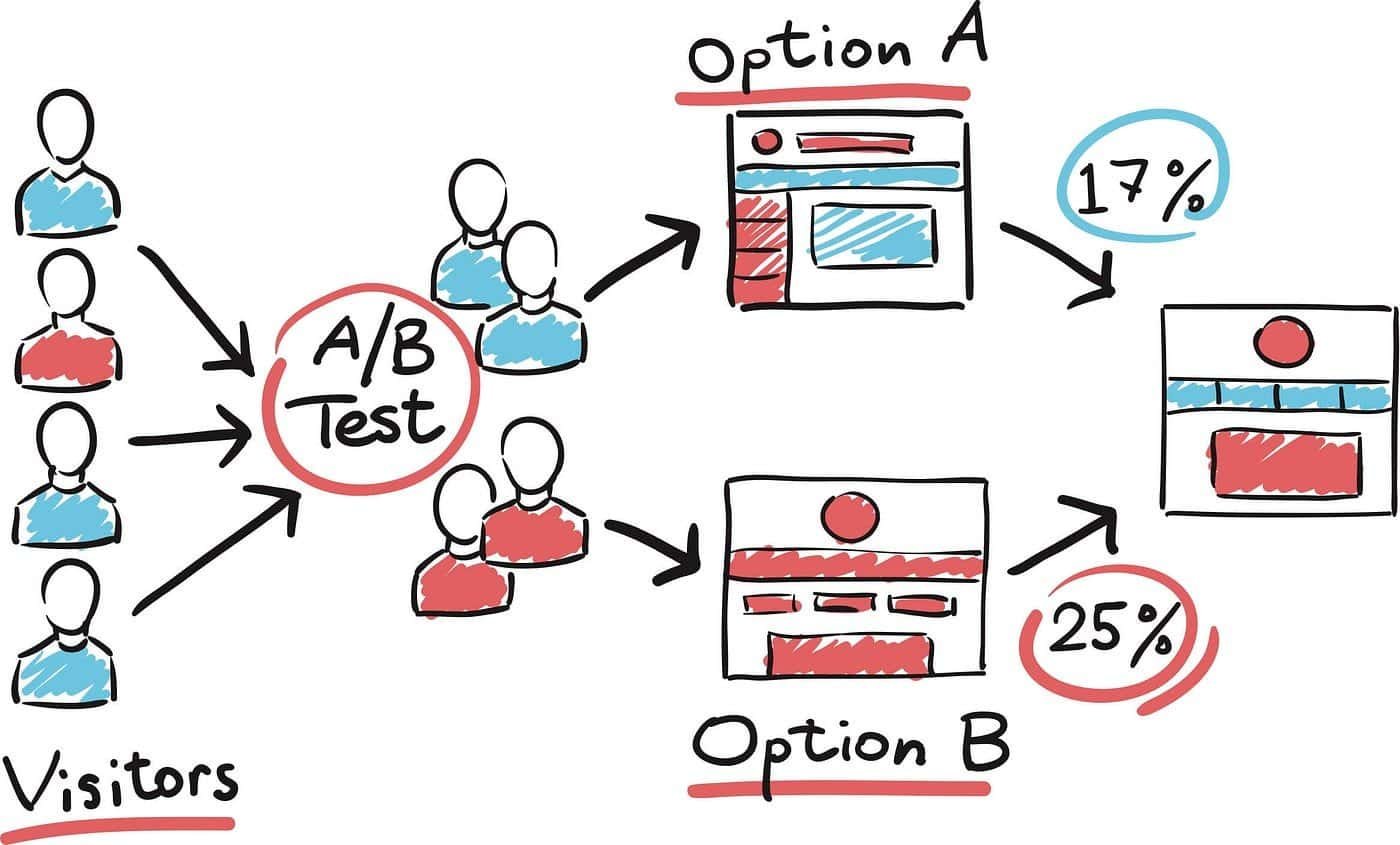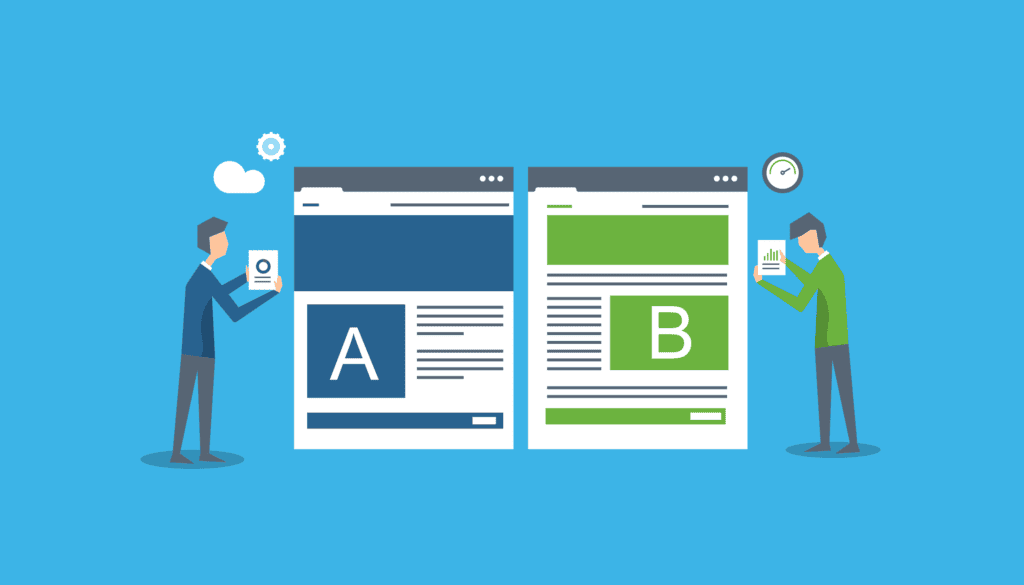Hey friend! Let’s talk about email marketing. We all know it’s essential for connecting with our audience, building relationships, and driving sales. But getting people to actually open our emails? Now that’s a challenge!
The key to unlocking those precious opens lies in crafting killer subject lines. And how do we find those subject line gems? With the magic of A/B testing!
What the Heck Is A/B Testing Anyway? (And Why Should I Care?)
A/B testing, also known as split testing, is a simple but powerful technique where you create two versions of your email subject line, each with slight variations, and send them to two similar but separate segments of your audience. It’s like a friendly competition between subject lines, where the one with the highest open rate wins!
But why is this important? Imagine this: You’ve poured your heart and soul into crafting a fantastic email, packed with valuable content, irresistible offers, and beautiful visuals. But if your subject line is a snoozefest, all that effort goes down the drain. People won’t even see your email, let alone open it!
A/B testing lets you:
- Figure out what actually works: Stop guessing what your audience loves and get data-driven insights into what subject lines resonate with them.
- Boost your open rates: Higher open rates mean more people are seeing your message, leading to increased engagement and ultimately, more conversions.
- Continuously improve your email marketing. It’s all about learning and evolving. A/B testing helps you refine your subject lines and overall email strategy over time.

Unleashing the Power of A/B Testing: Tips and Tricks
Ready to rock your A/B testing game? Here are some essential tips to get you started:
Focus on One Variable at a Time
It’s tempting to change a bunch of things at once, but resist the urge! To get accurate results, focus on testing only one variable at a time. For example, if you’re testing subject line length, keep everything else (like tone and keywords) consistent. This way, you’ll know exactly which change impacted your open rates.
Establish a Control Group
Think of your original subject line as the reigning champion. To see if your variations are truly better, you need a baseline for comparison. This is your control group—the folks who receive the original, unchanged subject line.
Strategically Select Your Test Subjects (Aka Your Audience)
When choosing your audience for testing, consider your goals and the subject line variations. For example, if you’re testing a subject line with a personalized offer, target a segment of your audience that’s likely to be interested in that offer.
Timing Is Everything
Imagine sending one version of your subject line on Monday morning and the other on a Friday afternoon. The difference in open rates might not be due to the subject line itself, but simply the day and time it was sent. To ensure accurate results, send both versions at the same time on the same day.
Don’t Be Afraid of a Larger Test Batch
Sure, you could send your test emails to a handful of people. But the smaller your sample size, the less reliable your results will be. For statistically significant results, aim for a larger test batch.
Be Patient, My Friend (Statistical Significance Takes Time)
Don’t jump the gun and declare a winner after sending out a few test emails. Give your test enough time to run and gather sufficient data. Many A/B testing tools will help you determine statistical significance, which means the results are likely due to the subject line variations, not random chance.

Unlocking the Vault of Subject Line Secrets: Creative A/B Test Ideas
Now that you’re a pro at setting up A/B tests, let’s get creative! Here are some clickbaity subject line ideas to spark your imagination:
The Power of Personalization: “Hey [First Name], We’ve Got Something Special Just for You!”
Personalization is like a warm hug in your inbox. It shows your subscribers that you care about them as individuals, not just numbers on a list. Try A/B testing subject lines that include your recipient’s first name.
Creating Intrigue with Specificity: “Unlock 5 Secrets to [Desired Outcome]”
Vague subject lines can be easily ignored. Instead, try being specific and highlighting the value your email offers. Test subject lines that mention the type of content inside, such as a video, discount code, or free guide.
The Curiosity Gap: “You Won’t Believe What Happened Next…”
Piquing your readers’ curiosity is a powerful way to increase open rates. Test subject lines that pose a query that is only accessible by opening the email.
Playing the Urgency Card: “Last Chance to Snag This Deal! (Expires Tonight)”
Creating a sense of urgency can encourage people to open your email right away. Test subject lines that include a deadline or limited-time offer.
Emoji Magic: New Arrivals You’ll Love
Emojis can add personality and visual appeal to your subject lines. Test subject lines with and without emojis to see what resonates better with your audience.

The Grand Finale: Making the Most of Your A/B Testing Results
A/B testing isn’t just about running tests; it’s about learning from the results and continuously improving your email marketing strategy.
Here’s how to make the most of your data:
- Analyze the Winning Subject Line: Don’t just declare a winner and move on. Figure out why the winning subject line performed better. Was it the length, the keywords, the tone, or something else?
- Implement Your Learnings: Once you’ve identified the winning elements, incorporate them into your future subject lines.
- Keep Testing: The email marketing landscape is constantly changing. Keep experimenting with new subject line variations to stay ahead of the curve.
Conclusion
A/B testing your email subject lines is like having a secret weapon in your email marketing arsenal. It empowers you to make data-driven decisions, optimize your subject lines, and dramatically increase your open rates.
Remember, A/B testing is an ongoing journey. Keep experimenting, analyzing your results, and refining your approach to achieve email marketing success!
FAQs
How often should I A/B test my email subject lines? There’s no magic number, but aim for at least one or two tests per month. You can also test more frequently if you’re launching a new campaign or making significant changes to your email strategy.
What’s a good open rate for email marketing? A good open rate can vary depending on your industry and target audience. However, a benchmark to aim for is around 20-30%.
Can I A/B test other elements of my emails besides the subject line? Absolutely! You can A/B test almost anything in your emails, including the call to action, email copy, images, and even the send time.

